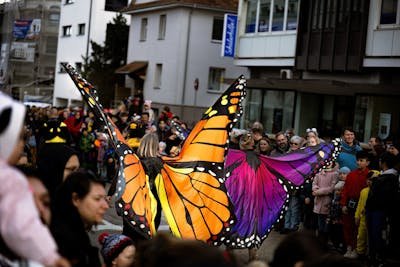Seoul Objects Story, the vibrant capital of South Korea, is a city teeming with history, culture, and unique objects that tell intriguing stories. From ancient relics to modern marvels, every object in Seoul has a tale to tell. This article explores the captivating stories behind some of Seoul’s most iconic objects, shedding light on their historical significance and cultural relevance. Whether it’s an old artifact from the Joseon Dynasty or a contemporary art piece, these objects are more than just items—they are windows into the rich and diverse heritage of Seoul.
Understanding the significance of these objects helps us appreciate Seoul not only as a bustling metropolis but also as a city deeply rooted in its past. Each object offers a glimpse into the lives and traditions of the people who have shaped the city over centuries. Join us as we delve into the stories behind Seoul’s treasured artifacts and modern creations, and discover how they contribute to the city’s unique character.
The Seoul National Museum’s Treasures
The Seoul National Museum is home to many objects that reflect Korea’s rich history and culture. One standout is the “Gold Crown of Silla.” This exquisite artifact, dating back to the 5th century, was discovered in a tomb in Gyeongju, the ancient capital of the Silla Kingdom. The crown, made of gold and adorned with intricate designs, symbolizes the power and sophistication of the Silla dynasty. It provides a glimpse into the artistry and craftsmanship of ancient Korea, highlighting the importance of royal regalia in demonstrating status and influence.
Another fascinating object in the museum is the “Goryeo Celadon Vase.” Known for its beautiful jade-green glaze, this vase represents the Goryeo Dynasty’s advancements in ceramics. The vase’s delicate craftsmanship and elegant design make it a testament to the artistic achievements of the era. These objects from the Seoul National Museum not only serve as reminders of Korea’s rich historical tapestry but also as inspirations for contemporary artists and craftsmen.
The Story of the Namdaemun Gate
Namdaemun Gate, also known as Sungnyemun, is one of Seoul’s most historic landmarks. Originally constructed in 1398 during the Joseon Dynasty, this gate served as a main entrance to the city. Its name, which translates to “Great Southern Gate,” reflects its significance as a gateway to the southern part of the city.
The gate has a storied history, including its destruction by fire in 2008 and subsequent restoration. The restoration project, completed in 2013, aimed to preserve the gate’s historical and cultural value. Namdaemun Gate’s story is a symbol of resilience and the importance of preserving cultural heritage in a rapidly modernizing city.
The Namsangol Hanok Village Experience
Namsangol Hanok Village is a living museum that showcases traditional Korean houses, or hanoks, from the Joseon Dynasty. Each hanok in the village has its own story, offering visitors a chance to step back in time and experience traditional Korean life.
One notable house is the “Kang’s House,” which belonged to a wealthy merchant during the late Joseon period. The house’s architecture and interior design reflect the status and lifestyle of its former inhabitants. By exploring these historical homes, visitors can gain insight into Korea’s past and appreciate the architectural and cultural heritage that has shaped modern Seoul.
The Significance of Seoul’s Modern Art Scene
Seoul is also known for its vibrant contemporary art scene. One prominent example is the “Dongdaemun Design Plaza” (DDP), a futuristic architectural marvel designed by the late Zaha Hadid. The DDP is more than just a design center; it’s a symbol of Seoul’s embrace of modernity and innovation. Its sleek, fluid design represents the city’s forward-looking approach while integrating elements of traditional Korean culture.
The DDP hosts various exhibitions, events, and design markets, making it a hub for creativity and cultural exchange. It reflects how Seoul blends its historical heritage with modernity, creating a dynamic and ever-evolving urban landscape.
The Hidden Gems of Insadong
Insadong is a neighborhood in Seoul known for its traditional Korean culture and art. It’s a treasure trove of unique objects, from antique paintings and calligraphy to handmade crafts. One of the standout objects found in Insadong is the “Korean Ink Stick,” used in traditional calligraphy and painting. The ink stick, made from natural materials, is ground on an inkstone to create ink for writing or painting.
Exploring Insadong offers visitors a chance to connect with Korea’s artistic traditions and discover objects that have been integral to Korean culture for centuries. The neighborhood’s blend of old and new, traditional and contemporary, makes it a vibrant representation of Seoul’s cultural diversity.
Seoul’s Iconic Palaces and Their Artifacts
Seoul’s palaces, such as Gyeongbokgung and Changdeokgung, are rich in historical artifacts and objects that narrate the lives of Korean royalty. At Gyeongbokgung Palace, the “King’s Throne” is a striking object that symbolizes the authority and grandeur of the Joseon kings. The throne, adorned with intricate designs and symbols of power, was used during important ceremonies and royal events.
Similarly, Changdeokgung Palace is known for its “Secret Garden,” a secluded area with beautiful landscapes and historical structures. The garden’s objects, including pavilions and stone sculptures, tell the story of the palace’s use as a retreat for the royal family. These artifacts and spaces offer a glimpse into the opulence and cultural significance of Korea’s royal history.
The Evolution of Seoul’s Transportation Objects
Seoul’s transportation history is marked by the evolution of various objects, from traditional palanquins to modern subways. The “Jangchung-dong Palanquin” is a historical object that was used by high-ranking officials and nobles during the Joseon Dynasty. These palanquins, carried by bearers, were a symbol of status and privilege.
In contrast, Seoul’s modern subway system represents the city’s rapid development and technological advancements. The subway trains, with their sleek design and efficient service, reflect the city’s commitment to progress and innovation. The transition from traditional to modern transportation highlights Seoul’s dynamic growth and adaptation to contemporary needs.
The Role of Souvenirs in Telling Seoul’s Story
Souvenirs are an integral part of Seoul’s cultural landscape, offering visitors a tangible connection to the city’s heritage. Items such as “Hanbok” (traditional Korean clothing), “Korean Tea Sets,” and “Hallyu Memorabilia” capture different aspects of Korean culture. Hanbok, with its vibrant colors and intricate designs, represents traditional Korean attire and is often worn during cultural festivals and ceremonies.
Korean tea sets, known for their delicate craftsmanship and elegant design, reflect the significance of tea culture in Korea. Hallyu memorabilia, associated with the Korean Wave, showcases the global influence of Korean pop culture. These souvenirs not only serve as mementos but also as stories of Korea’s rich and evolving cultural identity.
The Impact of Technology on Seoul’s Object Stories
Technology has significantly influenced the way objects are perceived and interacted with in Seoul. Digital displays and interactive exhibits in museums and cultural sites offer new ways to engage with historical objects. For example, augmented reality apps provide virtual tours and enhance the understanding of artifacts, making history more accessible and engaging.
The integration of technology with traditional objects also highlights Seoul’s innovative spirit. Modern technologies, such as smart devices and digital art installations, create a bridge between the past and the present, enriching the storytelling experience and reflecting the city’s technological prowess.
The Legacy of Seoul’s Cultural Objects
The objects of Seoul are more than just artifacts; they are carriers of cultural heritage and historical significance. Each object, whether ancient or modern, contributes to the city’s narrative and reflects its journey through time. By exploring these objects, we gain a deeper appreciation for Seoul’s rich history and vibrant culture.
As Seoul continues to evolve, its objects will remain vital in preserving and sharing its stories. They serve as reminders of the city’s past, anchors in its present, and inspirations for its future. Through these objects, we connect with the essence of Seoul and its ever-changing identity.
Conclusion
Seoul Objects Story , from ancient relics to contemporary creations, offer a fascinating glimpse into the city’s rich history and culture. By exploring the stories behind these objects, we gain a deeper understanding of Seoul’s past and present. Whether it’s the grandeur of royal artifacts, the charm of traditional crafts, or the innovation of modern designs, each object tells a part of Seoul’s story.
These Seoul Objects Story not only reflect the city’s heritage but also inspire future generations. As Seoul continues to grow and change, its objects will remain a testament to its vibrant history and cultural evolution. Embracing and preserving these stories ensures that the essence of Seoul is cherished and celebrated for years to come.
Q: What is the significance of the Gold Crown of Silla?
A: The Gold Crown of Silla is a highly valuable artifact from Korea’s Silla Kingdom, dating back to the 5th century. It represents the royal authority and sophisticated craftsmanship of the Silla dynasty, reflecting the cultural and artistic achievements of ancient Korea.
Q: What is Namdaemun Gate and why is it important?
A: Namdaemun Gate, also known as Sungnyemun, is a historic city gate in Seoul originally built in 1398. It served as a key entrance to the city and symbolizes Seoul’s historical resilience, particularly following its restoration after a fire in 2008.
Q: What can visitors experience at Namsangol Hanok Village?
A: Namsangol Hanok Village offers visitors a chance to explore traditional Korean houses from the Joseon Dynasty. Visitors can experience the architecture, interior design, and lifestyle of historical Korea through preserved and reconstructed hanoks.
Q: What is the Dongdaemun Design Plaza (DDP)?
A: The Dongdaemun Design Plaza (DDP) is a modern architectural landmark in Seoul designed by Zaha Hadid. It serves as a hub for design, exhibitions, and cultural events, representing Seoul’s blend of contemporary innovation and traditional culture.
Q: How does technology impact the preservation of historical Seoul Objects Story?
A: Technology enhances the preservation and presentation of historical Seoul Objects Story through digital displays, interactive exhibits, and augmented reality. These innovations make historical artifacts more accessible and engaging, enriching the visitor experience and understanding of Seoul’s heritage.
read more: cowordle























